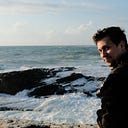Improving Transport Apps
Challenge 1: Design Thinking — Ironhack
Background
Citymapper is an app (and website) that is probably not well known by many as Google Maps is the chosen app of choice by most to get around from point A to point B. If you ask most people, Google Maps is The Mecca of all travel apps. But when you delve into Citymapper deeper, you see that it has some added benefits in comparison to other transport apps, though these benefits are largely geographical in nature. For example, Citymapper now has a Citymapper pass which allows to you travel all around London with one pre-loaded card. No more switching between different apps, no more queuing at subway (tube for the British) stations. Literally everything can take place on the one app. However, this feature launched in 2019 has thus far been limited to London.
Main Existing Problems
For this challenge, the purpose was to interview and empathize with 5 users regarding their experience in using public transport, both at home and abroad. The main problems everyone encountered were as follow:
- The lack of features with offline maps is very frustrating when traveling abroad
- The lack of data makes traveling more difficult
- The lack of ability to buy tickets from any one central location is frustrating and currency and language barriers are equally cumbersome
- Amsterdam tourists don’t know how to bike and canals are frustrating (mostly unrelated and a known fact but funny anecdote that came from the interviews)
As I summarized the findings, it was clear that point 1, 2, and 3, are incompatible, meaning they can’t all be solved at the same time. Another thing was clear that all these problems lead to the same equation:
High barrier to accessibility = lost time + frustration
All of my interviewees used their travel apps on the go when traveling abroad, and as far as I know you can’t purchase anything while being “offline.” In addition, data is more and more accessible and if not, there are usually free public wi-fi points in many cities or restaurants abroad. Thus, I decided that point number 3, was most worth solving.
How to solve?
I planned to solve this problem by coming up with several ideas, how to integrate the ability to purchase tickets from various different public transport networks on one single app. Ignoring the technical requirements for a bit, I came up with something fairly simple. You enter a location, input your destination including the date and time of desired departure. Next you choose your preferred method of travel (subway, bike, walking etc) and before confirming your selections you have the option of excluding/including different specifics (think of Google Maps avoid highways option). Next, you are given multiple options by the application with your preferred method being the top option(s). This selection can take the form of many travel websites “best value” filter, meaning a combination of fastest time with cheapest method. If the best option is indeed an option which includes the purchase of a public transport ticket, you will be given the option to purchase the ticket through the app, while also choosing which currency you want the purchase to be shown in and the amount of tickets (it is often more efficient to buy multiple tickets and split costs at the end of your trip). Then, a regular purchase through your bank would take place and a QR code which would be your entry and exit ticket to public transport would materialize on your screen; with the ability of saving this to your wallet or your photos. Below you can find screens of the wire-framing.
Prototypes
Learnings
It had been a while since I interviewed people so I felt a bit rusty and reading back my notes. This was also one of my first exercises in wire-framing. I’ve done some design thinking in my work in this past and am familiar with the process which I do enjoy thoroughly, so I do feel comfortable with the whole EDITP process. However, I still learned a bunch during these exercise:
- The interview process really needs to be iterated at all times. My interview questions largely stayed the same and in the future needs to have room for more improvisation or added questions. Again I feel like this was because these were my first interviews in a long time.
- The interview process although the “less seen” aspect of the whole process is the most important. As without good interviews, you have no good findings, not much to ideate on and therefore the whole process suffers. It really feels like building a house without a solid foundation.
- Putting things down on paper is important, more ideas came to me and once I had isolated the themes by highlighting them on my document, putting them down on paper was really when I could see how I would move forward with the wireframing.
